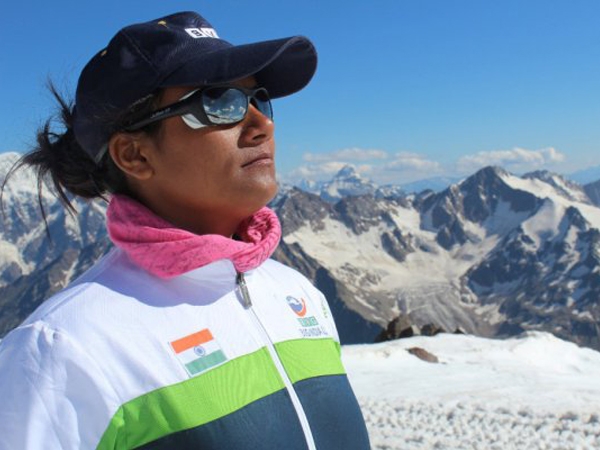
It is becoming increasingly hard to ignore religion these days. It stares you in the face, each time you step onto the street, in the writing on the walls, in most social conversations and of late, in the newspapers too, on a regular basis. Barely two days before the polls in Delhi, the national capital is witnessing a massive protest over the repeated attacks on churches. The protests began after ceremonial items were reported stolen from St.Alphonsa’s church in Vasant Kunj, Delhi on February 2.
What is more, this is the fifth attack in the last two months. In December 2014, the police had to step in and provide security to all 225 churches in Delhi after a catholic church, St.Sebastian’s in Dilshad Garden, North Delhi was gutted in a mysterious fire on December 1, leading to a sit in by Christians and their supporters alleging that it was arson. The police later confirmed that it was arson but no arrests were made.
The atmosphere of fear and suspicion further increased when stones where thrown at the Syro-Malabar catholic church at Jasola in Okhla during evening mass on December 7.
Moreover, in most of these cases, the thieves only stole sacred ceremonial stuff, but did not touch the donation box, which proves the intent was not just robbery, said Father Vincent Salvatore, St.Alphonsa’s church, in an interview with the IANS.
John Dayal, former president of the All India Catholic Union, told IANS, “Somebody is trying to target our (Christian) community. Since this is election time, it has another dimension. We see a clear pattern in these attacks.”
To add insult to the injury, the Delhi police chalked it off as a ‘stray’ incident and added that there was no pattern in the repeated attacks on churches in New Delhi.
This has brought on this latest wave of protests on February 5 outside the Sacred Heart Cathedral in Delhi, which saw the police drag priests, nuns, women and children onto police buses to stave off the protest.
The police may deny that there is a pattern in the church attacks. But there is another pattern here that would make us fools if we did not consider it.
Eight months ago, in June 2014, a young techie from Pune, returning home from work, was killed by alleged members after derogatory pictures of Shivaji were posted on Facebook, triggering communal tension. Since then we have seen a Dussehra marked by religious clashes in Vadodara where two men were stabbed and a dozen injured; a Diwali marked by religious riots in Trilokpuri in Delhi; a widespread mass religious conversion happily endorsed by the Sangh Parivar and the minister of state for food processing, Niranjan Jyoti making an extremist comment like ‘Raamzade vs Haramzaade’.
And now there are these mysterious attacks on churches. Of late, India’s religious intolerance, which was previously lurking in the dark underbellies of our cities and remote villages in the countryside, seems to have catapulted out into the open.
It’s an uncomfortable sort of limelight which leaves us open to censure from a visiting President, Barack Obama, who exited after the Republic Day festivities with a parting shot, ‘India would only succeed if it didn’t splinter along religious lines’. Many interpreted his comments about religious divisions in India as a warning to our Prime Minister Narendra Modi, given his past.
And if you thought that was censure enough, Obama clearly did not. On February 5, Obama also declared that the acts of intolerance in India “would have shocked Gandhiji, the person who helped to liberate that nation.”
“India was full of magnificent diversity – but a place where, in past years, religious faiths of all types have, on occasion, been targeted by other peoples of faith, simply due to their heritage and their beliefs,” said Obama during a National Prayer Breakfast address in Washington.
We have also had editorials by foreign newspapers like New York Times, noting the growing religious intolerance in India. The NYT particularly referenced how the winter session of the Parliament was constantly interrupted by the uproar over a ‘homecoming campaign’ by the RSS and VHP to reconvert Christians and Muslims to Hinduism. The article blamed Modi for not reigning in the more hardline elements in the Parivar.
Today, the Christian community sitting in on protest against the attack on their churches has also laid this issue on Modi’s door. Father Jolly, one of the protesters, told BBC Hindi that the attacks on churches was making Christians “feel very unsafe”.
“The Prime Minister is still silent on the issue. In the backdrop of these attacks, he should come forward and issue a statement. He should give us confidence,” he said.
Now, the BJP may NOT be responsible for these attacks. But by staying silent on all these religion-related controversies, all of which have happened after the new government assumed office, they have invited these accusations upon themselves. When visiting dignitaries comment on religious violence in the country, doesn’t it seem like it’s too late for the PM to reassure them on his development agenda, his pet poll plank of ‘Achche Din’ that got him voted into the office?
Image Courtesy: BCCL
More on>> Balancing Act




